Large Blue Flycatcher (Cyornis magnirostris) is probably one of the most enigmatic flycatchers in Asia. Until quite recently, it was treated as a subspecies of the more widely distributed Hill Blue Flycatcher despite looking remarkably different. I recently had a chance to observe an adult male Large Blue Flycatcher that had been returning to the same wintering spot at Sri Phang Nga National Park for several winters. I thought it might be interesting to document some of the notes that I have regarding this little known species.

I had a chance to visit Sri Phang Nga National Park between 27-28 January 2024. During my visit, I was able to observe a male Large Blue Flycatcher that was coming to a stakeout on both days. Apparently, this bird had been showing up at this particular spot for several winters already. It seemed to have become tamer and more confiding each winter. It was a great opportunity for me to observe this enigmatic species that is rarely studied both in the wintering and breeding grounds.
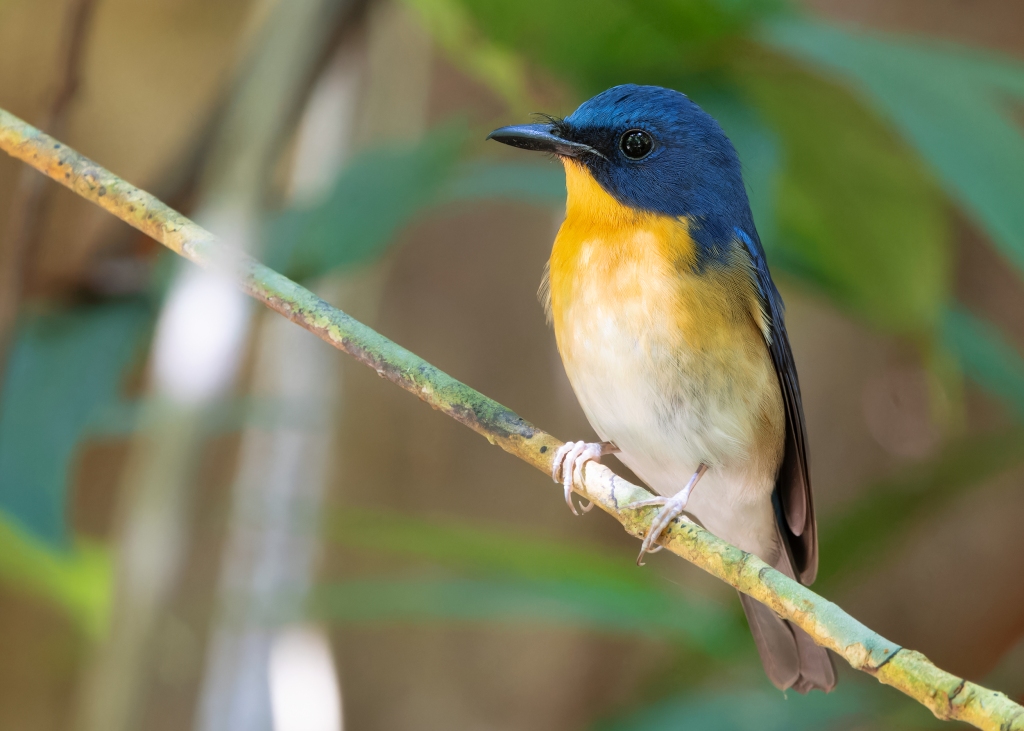
While most migratory flycatchers in Thailand have a breeding range across East Asia and Siberia, the Large Blue Flycatcher has a tiny breeding range restricted to a small area in eastern Himalayas. During the non-breeding season, it migrates through western and central Thailand to spend the winter in southern Thailand and northern part of Peninsula Malaysia.
Most birders in Thailand have probably seen this species during passage migration when few individuals are reported each year from urban parks in and around Bangkok. I also saw my first Large Blue Flycatcher, a male, at Phutthamonthon Park in Nakhon Pathom in January 2020 followed by a female at Chulalongkorn University in Bangkok in December 2020.
Records from the actual wintering grounds are much scarcer. It’s probably because there are fewer birders in the south. Only few wintering grounds have been discovered in the recent years, mostly restricted to the upper southern provinces including Ranong, Chumphon, and Phang Nga.
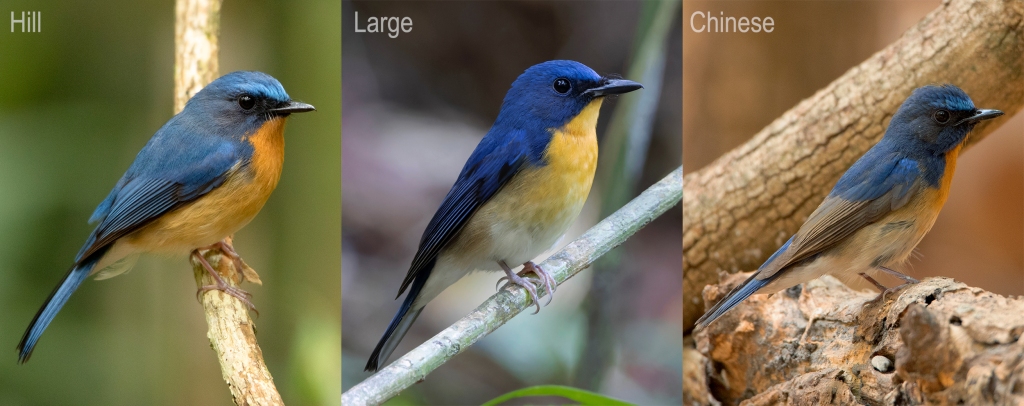
As for the identification, I’ll only discuss the identification of the male as I still lack decent photos of the female of this species. Compared to other blue Cyornis flycatchers, especially the Hill Blue Flycatcher (C. whitei), the male Large Blue Flycatcher is best told by the combination of a large and heavy bill, short tail, long primary projections, and pale pinkish legs and feet. The more widely distributed Chinese Blue Flycatcher (C. glaucicomans), that also winters in the same region as the Large Blue Flycatcher, typically has a duller appearance with darker blue upperparts and much narrower orange wedge on the throat. The bill, although variable, is typically smaller and the legs and feet are typically darker and more greyish in the Chinese Blue Flycatcher as well.
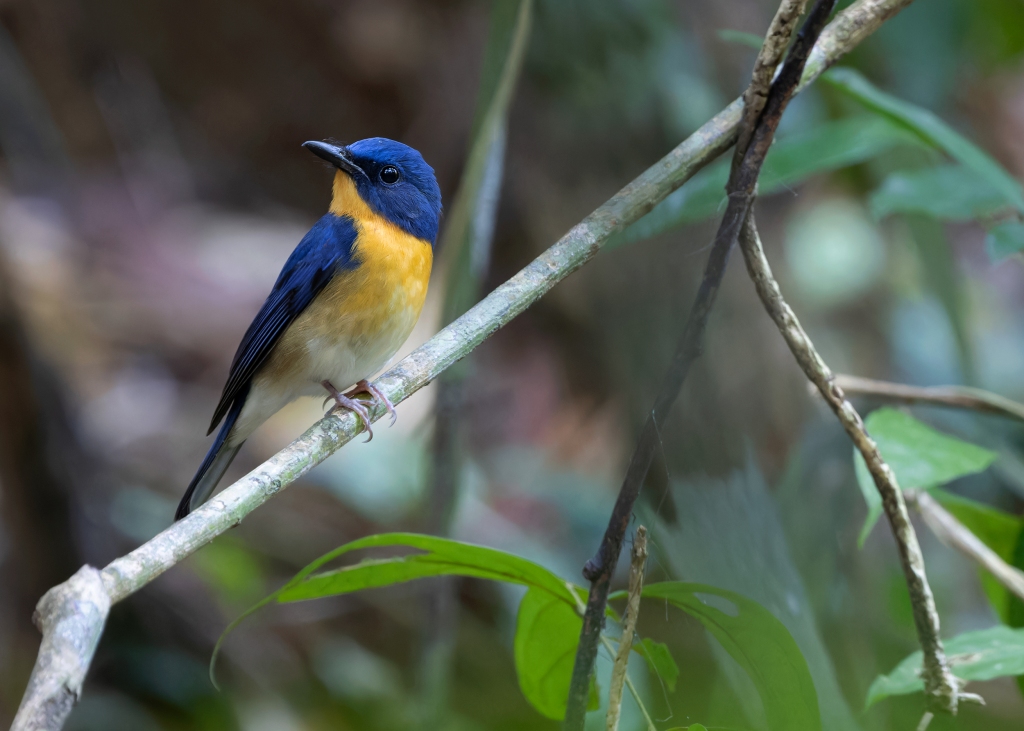
From my observations, it seemed that the Large Blue Flycatchers prefer to sit quietly in dense and shady undergrowth. They also rarely make any calls. I only heard the male at Sri Phang Nga gave a short series of really soft and extremely high-pitched calls when visiting the stakeout.
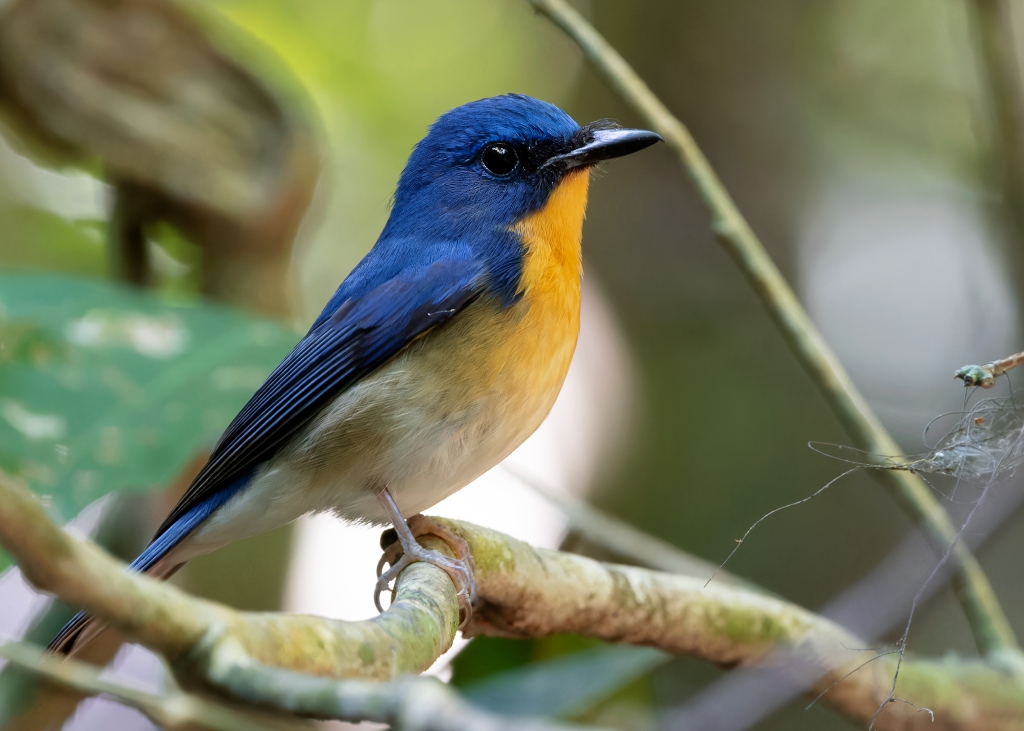
This particular male at Sri Phang Nga could be aged as an adult because of the completely blue wing coverts and flight feathers. Like other blue Cyornis flycatchers, first-winter birds would have brownish wings contrasting to the blue body feathers. Autumn birds would also show pale pinkish gape which will gradually turn black in spring. Unlike most migratory flycatchers in Thailand, the Large Blue Flycatcher also migrates back to the breeding ground much earlier. This male at Sri Phang Nga was last seen on 2 March 2024, which is quite typical for this species. Hopefully, I’ll also get to see and photograph the female next winter.
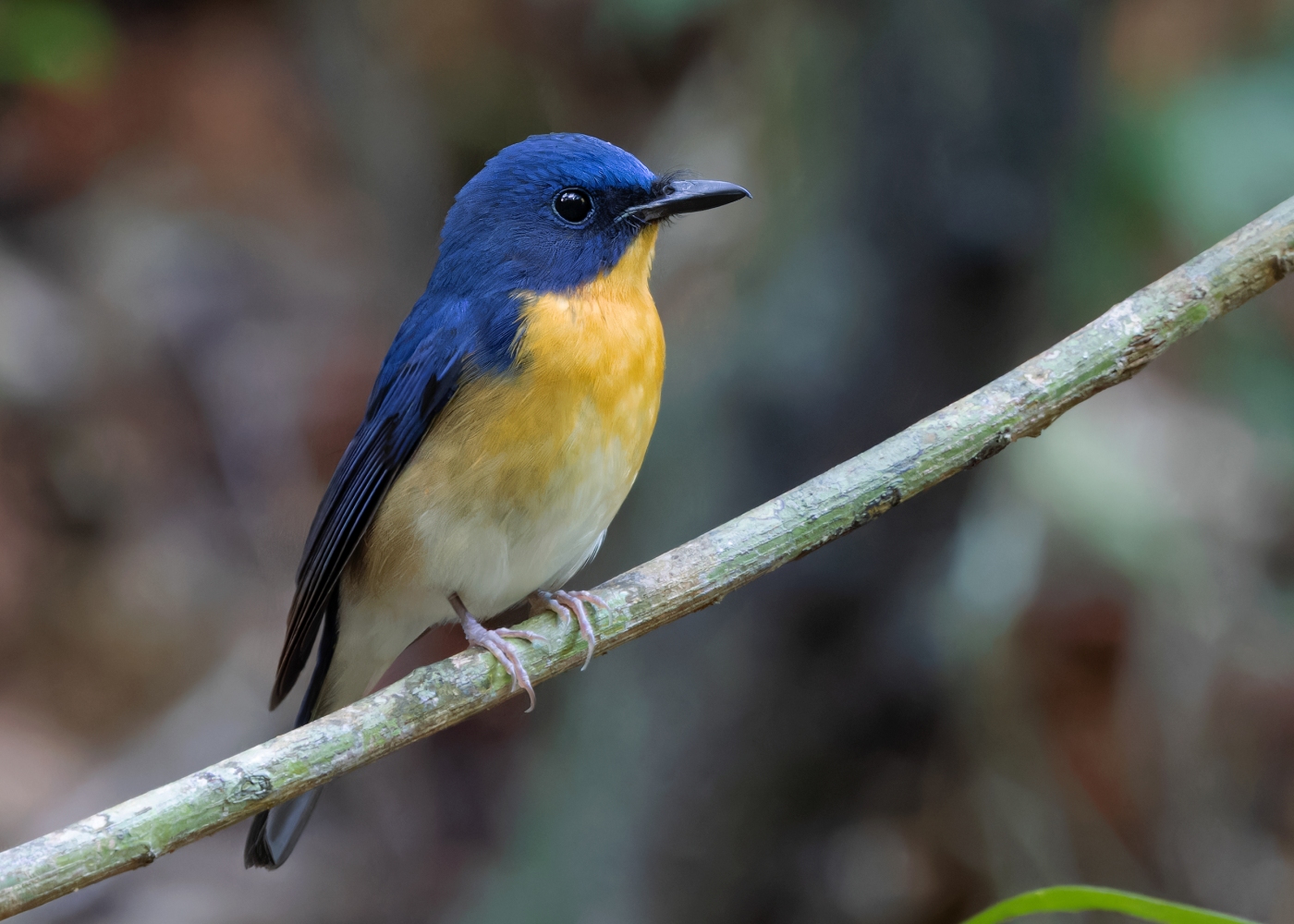
Leave a comment